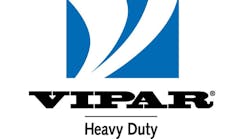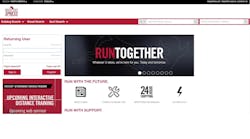BASED on surveys and studies the National Truck Equipment Association (NTEA) has conducted since October, “steady growth” is being projected in the industry through 2015, including increased sales for Class 4-8 trucks.
“The pros are strong,” NTEA executive director Steve Carey said in his “State of the Industry” presentation. “The leading indicators have increased in six of the eight preceding months, there is pent-up consumer demand, interest rates remain low, consumers and businesses continue to hold cash reserves, the average age of trucks is increasing, fleet purchasing continues to lead the recovery, and the construction industry is showing signs of life.
“There are some cons: Although improving, commercial and residential construction remains slow, there are state and local government spending constraints, the labor market imbalance continues, there is some political and economic uncertainty, consumer confidence remains below historic norms, and small-business truck buyers remain cautious.”
But the picture remains very good for NTEA members. NTEA's business conditions survey shows that 74% had higher sales in 2012 as opposed to 2011, with 13% unchanged and 13% reporting lower sales.
Other results:
• 59% expect an improvement in the business climate in 2013 (a 20% decline from last year’s survey), 7% expect a decline (up 3%), and 34% expect it to stay the same (up 17%).
• 10% expect full capacity in 2013, 53% expect three-quarters to full capacity, 35% expect one-half to three-quarters, and 2% expect one-half or less.
“We’re seeing much more stabilized movement with how members are using physical plants and assets,” Carey said.
• 37% say they have 30 or fewer days on lead times, 31% have 31 to 60 days, and 32% have 60 or more days (an 8% gain, with it moving entirely from the 30-60-day category).
“We’ve certainly seen a drastic reduction the last four years in 30 days or less,” Carey said.
• 43% say backlogs are higher, 39% unchanged, and 18% lower.
“We dug a little bit deeper in the comments and saw another trend happening: as the industry continues to recover, they’re putting a higher percentage of the plant into operation to manage that backlog going forward,” he said.
• In terms of challenges to a recovery, overall economic conditions were cited by 84.7% of the respondents; global economic uncertainty, 31.8%; tight credit market, 27.3%; low consumer confidence, 27.8%; continuation of the poor housing market, 22.7%; political uncertainty, 32.4%; and federal government financial or regulatory policy, 45.5%.
“We thought we might see some softening in the concern over overall economic conditions in the survey respondents, but they came back just as strong,” he said. “They’re still not sure what’s going on with the recovery. What’s taking place in Washington right now is certainly an indication of things that make us feel not quite stable in what’s happening going forward.”
• In terms of current concerns, changing industry conditions (changing customer and marketplace dynamics) were mentioned by 43.9%; access to working capital, 12.7%; increased competition, 25.4%; access to truck chassis, 9.8%; higher cost of doing business, 57.8%; complying with regulations, 24.9%; finding and keeping qualified employees, 38.2%; and growing my business, 23.7%.
“There was a change,” he said. “The higher cost of doing business gained a fairly significant jump in percentage points. We went into the data and started looking at it, and comments reflected things like compliance with regulations, labor commodity pricing and insurance costs, and health care. We think this is something that will gain a little bit of traction going forward as the industry continues to come back from 2009. The challenges of the costs of operating a company will be a problem for everybody.”
Fleet survey
Survey results from a survey of 300 fleet managers from across the nation, 47% of which were government/municipal fleets:
• 86%—a gain of 2%—say they plan to replace existing trucks in their fleet in 2013, 26% say they will be acquiring more, 21% say less, 39% say the same, and 14% say no new acquisitions are planned.
• Fleet age continues to increase, with 46% saying it’s increasing, 21% decreasing, and 33% staying the same.
“We still see a general belief and push from a fleet managers’ perspective that their fleet age will continue extending out, and we believe the pace of that is slowing a bit, but they’re still going to get older,” he said.
• 63% say they are actually changing specs on trucks in order to make them more efficient from a fuel-consumption standpoint.
“We asked them what that meant, and they answered across a myriad of options they’re looking at,” he said. “It’s not just about alternative fuels, which led the way at 32%. They’re also looking at other technologies they can use such as driver training/monitoring (31%), powertrain optimization (25%), telematics and route optimization (23%), vehicle weight reduction (21%), engine stop/start technology, (13%), auxiliary power units (13%), electrification of truck systems (12%), improved vehicle aerodynamics (10%), and auxiliary environmental control systems (2%).
• 55% say their 2013 truck acquisitions are funded, 32% say funding is likely, and 13% say funding is questionable.
Carey said the NTEA will soon be releasing a new study on the truck equipment industry value chain, based on a survey late last year of manufacturer and distributor members.
“We asked manufacturers, ‘What's the real path to market?’ and the highest percentage said they're taking a multi-faceted approach and are looking at direct sales options as well as traditional distribution,” he said. “And 12% said they're exclusively direct sales or exclusively distribution.
“We looked at the manufacturer over the past five years who had a significant increase in market share, and almost 60% said they had more volume going through independent distributors. Of the ones that said they had decreased market share, over 60% said they had less volume going through independent distributors.
“Distributors indicated their reliance and partnership with manufacturers has increased over the past five years, with 60% saying sales volumes were up, compared to 27% staying the same and 20% saying they've decreased. Of the distributors who said volume had gone down, 40% said their reliance in partnering with manufacturers had decreased over the same time period.
“We believe this data means the industry has gone into a position where the buyer of the vehicle has multiple crush points with companies involved in producing the truck. We believe the importance of the relationship and communication between body companies, distributors, dealers and leasing companies are more critical today because the buyer of the vehicle can connect at any level they want to and the rest of parties involved come together and fill the order for the vehicle. This is a shift in the traditional truck distribution channel from years ago.”








